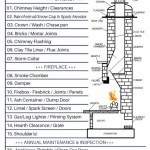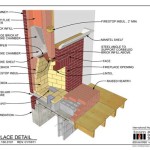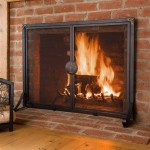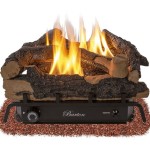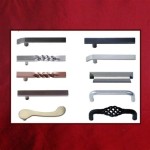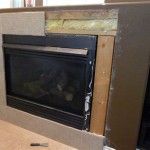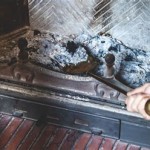How to Build an Outdoor Fireplace: A Comprehensive Guide
An outdoor fireplace serves as a focal point for any outdoor living space, providing warmth, ambiance, and a gathering spot for family and friends. Constructing one requires careful planning, adherence to safety regulations, and the right materials. This article provides a comprehensive guide on building an outdoor fireplace, covering the essential steps from planning and design to construction and finishing.
Before starting, it is crucial to confirm local building codes and regulations regarding outdoor fireplaces. These regulations often dictate setback distances from property lines, required permits, and specific construction standards related to fire safety. Ignoring these regulations can lead to fines, legal issues, and the potential need to dismantle the structure. It is also advisable to contact local utility companies to identify and mark any underground lines before excavation.
Planning and Design Considerations
The first step in building an outdoor fireplace is developing a detailed plan. This plan should incorporate a design that complements the existing landscape and considers the fireplace's intended use. The size of the fireplace will depend on the available space and desired aesthetic. For smaller patios, a compact design may be appropriate, whereas larger areas can accommodate a more substantial structure.
Material selection is another key consideration. Common materials include brick, stone, concrete blocks, and stucco. Brick and stone offer a traditional aesthetic and are durable, but can be more expensive. Concrete blocks are a more affordable option, often covered with stucco or veneer for a more refined appearance. The choice of material should reflect the overall style of the outdoor space and the homeowner's budget.
The fireplace design should include a firebox, a chimney, and a hearth. The firebox is the area where the fire will be built, and should be constructed with fire-resistant materials. The chimney is responsible for venting smoke and gases away from the seating area. The hearth is a non-combustible surface extending from the firebox opening, protecting the surrounding area from sparks and embers. A well-designed chimney is critical for proper drafting and efficient smoke removal.
In addition to these core components, consider incorporating features such as a wood storage area, a grilling surface, or decorative elements. These additions can enhance the functionality and aesthetic appeal of the fireplace. Draw a detailed sketch or use design software to visualize the finished product before starting construction.
Foundation and Base Construction
A solid foundation is essential for the stability and longevity of the outdoor fireplace. The foundation should extend below the frost line to prevent shifting and cracking due to freezing and thawing. Excavate the area for the foundation to the required depth, typically 12 to 24 inches, depending on local climate conditions.
Pour a concrete footing into the excavated area, ensuring it is level and properly compacted. The size of the footing should be proportional to the size and weight of the fireplace. Allow the concrete to cure for at least 24 hours before proceeding with the base construction.
The base of the fireplace can be constructed from concrete blocks, brick, or stone. Lay the first course of blocks or stones on top of the concrete footing, using mortar to secure them in place. Ensure that each course is level and plumb. Stagger the joints between blocks or stones to create a strong, interlocking structure. Continue laying courses until the base reaches the desired height.
For added stability, consider reinforcing the base with steel rebar. Insert rebar vertically into the core of the blocks or stones and fill the voids with concrete. This reinforcement will help to prevent cracking and shifting over time. It is important to incorporate proper drainage into the base design to prevent water accumulation, which can damage the structure. Provide weep holes or a gravel base to allow water to escape.
Firebox and Chimney Construction
The firebox is the heart of the outdoor fireplace and requires careful construction to ensure safety and functionality. The firebox should be lined with firebrick, a heat-resistant material designed to withstand high temperatures. Lay the firebrick on a bed of refractory mortar, ensuring that the joints are tight and uniform. The firebox dimensions will depend on the desired size of the fire, but a typical firebox is 36 inches wide, 24 inches deep, and 30 inches high.
The firebox opening should be designed to allow for proper airflow and combustion. A slightly arched opening can improve draft and prevent smoke from billowing out into the seating area. A smoke shelf, located above the firebox opening, helps to deflect downdrafts and improve smoke flow. Construct the smoke shelf by angling a section of firebrick or concrete block inward towards the firebox.
The chimney is responsible for venting smoke and gases away from the fireplace. The chimney should be constructed with fire-resistant materials, such as brick, stone, or a metal chimney liner. The height of the chimney is crucial for proper drafting. A chimney that is too short will not create enough suction to draw smoke upwards, while a chimney that is too tall can create excessive draft. As a general rule, the chimney should extend at least two feet above the highest point of the surrounding structure.
As the chimney rises, gradually reduce its width to create a tapered effect. This taper helps to increase the velocity of the smoke and improve draft. A chimney cap, installed at the top of the chimney, prevents rain and debris from entering and obstructing the flue. The chimney cap should be made of stainless steel or a similar weather-resistant material.
Finishing and Safety Considerations
Once the firebox and chimney are complete, the fireplace can be finished with a variety of materials to enhance its aesthetic appeal. Stucco, veneer stone, or brick can be applied to the exterior surface to create a cohesive look with the surrounding landscape. Before applying any finishing materials, ensure that the surface is clean and properly prepared.
Stucco is a versatile finishing option that can be tinted to match any color scheme. Apply stucco in several thin layers, allowing each layer to dry completely before applying the next. Veneer stone provides the look of natural stone at a fraction of the cost. Attach veneer stone to the fireplace using mortar, ensuring that each stone is securely in place. Brick can be used to create a classic, timeless look. Lay the brick in a pattern that complements the overall design of the fireplace.
Safety is paramount when building and using an outdoor fireplace. Always maintain a safe distance between the fireplace and any flammable materials, such as trees, shrubs, or overhanging structures. A fire-resistant barrier, such as a metal screen, should be placed in front of the firebox opening to prevent sparks from escaping. Never leave a fire unattended, and ensure that it is completely extinguished before leaving the area. Keep a fire extinguisher or a garden hose readily available in case of emergency.
Regular maintenance is essential for the safe and efficient operation of the outdoor fireplace. Clean the firebox regularly to remove ashes and debris. Inspect the chimney for cracks or obstructions, and have it professionally cleaned if necessary. Repair any damaged mortar joints to prevent water from seeping into the structure. By following these guidelines, the outdoor fireplace will provide years of enjoyment and enhance the beauty of the outdoor living space.

How To Build An Outdoor Stacked Stone Fireplace

How To Build An Outdoor Fireplace Step By Guide Buildwithroman

How To Build An Outdoor Fireplace Today S Creative Life

How To Build An Outdoor Fireplace Firefarm Living

How We Built Our Outdoor Fireplace Chris Loves Julia

Outdoor Fireplace With Bench Seating W Tips From A Professional Mason

Diy Building An Outdoor Fireplace

Stonetutorials Living Stone Masonry

How To Build An Outdoor Fireplace Step By Guide Buildwithroman

How To Build An Outdoor Fireplace Firefarm Living
Related Posts


